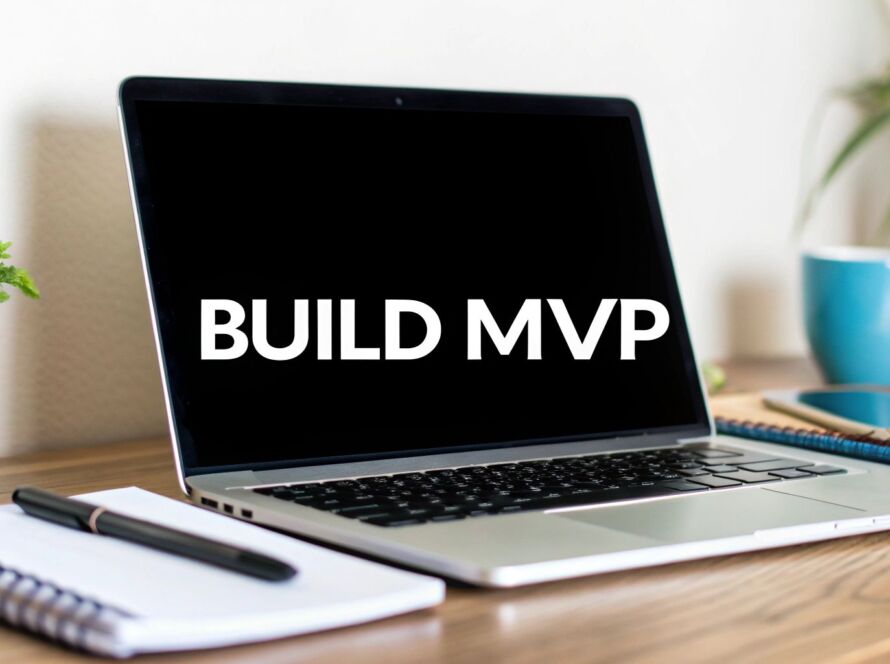Navigating Today's Product Launch Landscape

Launching a new product successfully takes careful planning and execution. Research shows that 95% of new products fail to gain traction in the market – a stark reminder of just how challenging product launches can be. However, by understanding key success factors and common pitfalls, you can significantly improve your chances of a successful launch. Let's explore what it takes to beat the odds and bring a winning product to market.
Understanding the Challenges of a Product Launch
Product launches require substantial investment, with costs ranging from $10,000 for smaller projects to over $10 million for major launches. Even with proper funding, only 40% of products achieve long-term success in the market. The good news? Companies that take a data-driven approach to launches, including thorough market research, are 30% more likely to succeed. This research goes beyond just understanding customer needs – it reveals competitive dynamics and helps identify gaps where your product can truly stand out.
Building Resilience and Managing Expectations
Success requires both flexibility and persistence. Product launches rarely go exactly according to plan, so being ready to adapt your strategy is essential. Clear communication with stakeholders helps keep everyone aligned on goals and potential challenges. For example, setting realistic timelines and milestones from the start prevents misaligned expectations that can derail momentum. When teams understand that setbacks are normal parts of the process, they're better equipped to overcome them.
Identifying Your Unique Advantage
Standing out is crucial in crowded markets. Your product needs a clear unique selling proposition (USP) that sets it apart from alternatives. This could be an innovative feature, compelling price point, or exceptional user experience. Think of your USP like finding the perfect niche in nature – just as each species fills a specific role in an ecosystem, your product needs to serve a distinct purpose for customers. Take time to study competitors and identify underserved needs that your offering is uniquely positioned to address.
Assessing Market Readiness
Even an excellent product will struggle if launched at the wrong time. Carefully evaluate market conditions, demand signals, and regulatory requirements before launch. Use a mix of quantitative data (like surveys and market analysis) and qualitative insights (from focus groups and customer interviews) to gauge if the market is truly ready for your solution. Understanding timing is just as important as perfecting your product. This foundational work sets you up to build anticipation and execute an effective pre-launch strategy.
Mastering Market Research That Actually Matters

After nailing down your unique selling proposition and ensuring market readiness, it's time to dig deep into market research. This step goes far beyond just validating your assumptions – it's about truly getting to know your customers and market at a fundamental level. Research shows that companies who invest in thorough market research see 30% higher launch success rates across product features, marketing, and overall strategy. Let's explore how leading companies use research to build products people actually want.
Defining Your Target Audience
Start by building a clear picture of your ideal customer. This means going deeper than basic age and location stats to understand what truly drives their decisions. Think of it as creating a detailed character profile – what frustrates them? What goals motivate them? What do they value most when making purchases? The more you understand these elements, the better you can shape your product to fit seamlessly into their lives. For example, knowing whether they prioritize saving time versus saving money will guide everything from feature development to pricing strategy.
Practical Approaches to Gathering Customer Feedback
Good feedback forms the foundation of effective research. Each research method offers unique insights: surveys help you collect hard data from large groups, focus groups let you explore the "why" behind customer preferences through group discussion, and one-on-one interviews reveal subtle details you might miss otherwise. By combining these approaches, you'll build a complete picture of what your customers really need and want.
Analyzing the Competitive Landscape
Understanding your competition is essential for standing out. Look beyond surface-level features to understand their real strengths and weaknesses:
| Competitor | Strengths | Weaknesses | Market Positioning |
|---|---|---|---|
| Competitor A | Strong brand recognition, wide distribution network | High prices, limited customer service | Premium product |
| Competitor B | Innovative features, strong online presence | Limited retail presence, newer brand | Disruptive innovator |
| Competitor C | Affordable pricing, wide product range | Dated technology, poor user experience | Budget-friendly option |
This analysis helps spot gaps where your product can shine. For example, if competitors neglect customer support, making service excellence your hallmark could win over frustrated customers.
Identifying Genuine Market Opportunities
Bringing together customer feedback, competitive analysis, and market trends helps pinpoint real opportunities for your product. Success comes from either solving problems better than existing solutions or addressing unmet needs entirely. Just as a skilled gardener creates ideal growing conditions, thorough market research creates the perfect environment for your product to thrive. Focus on finding that sweet spot where customer needs, market gaps, and your capabilities intersect – that's where sustainable growth happens.
Building A Customer Experience That Converts
When it comes to launching a successful product, research and strategy are essential foundations – but the real test lies in delivering an exceptional customer experience from day one. Studies show that 80% of users expect perfection from their very first interaction. This sets a high bar for product teams who must balance creating amazing experiences while hitting launch deadlines.
User Testing and Feedback Integration
The key to building experiences that convert starts with getting real user feedback early and often. By putting your product in front of actual users throughout development, you can identify pain points, refine features, and ensure you're truly meeting customer needs. Think of it like test driving a car – you want to know how it handles in real conditions before taking it to market. Without proper testing, even small usability issues like confusing navigation can drive users away and derail your launch.
Quality Assurance: The Unsung Hero of Product Launches
Behind every great customer experience is rigorous quality assurance testing. While QA may not be glamorous, it's critical for catching bugs and performance issues before they impact real users. Consider QA your product's safety net – it helps build trust by ensuring a smooth, reliable experience from the start. First impressions matter immensely, so launching with quality issues can permanently damage user perception and adoption.
Balancing Feature Completeness and Time-to-Market
One of the biggest challenges is determining what features to include at launch versus what to add later. While it's tempting to pack in every possible feature, this often leads to delays and confusion. A smarter approach is focusing on core functionality first, then expanding based on real user needs. For instance, when building a house, you wouldn't wait to install every possible amenity before moving in. Start with the essentials, then enhance over time based on how people actually use the space.
Building for Long-Term Loyalty
Creating experiences that convert isn't just about the initial launch – it's about fostering lasting relationships with users. This means delivering consistent value through exceptional support and continuous improvements that anticipate evolving needs. When you focus on the complete customer journey, you turn early adopters into vocal advocates who amplify your success through word-of-mouth recommendations. Satisfied customers become repeat customers, creating momentum that powers sustainable growth long after launch.
Crafting Pre-Launch Campaigns That Create Buzz

The secret to a stellar product launch goes far beyond having an amazing offering – it's about sparking real excitement before your product even exists. The pre-launch phase sets the foundation that can make or break your launch success. Done right, it builds unstoppable momentum and captures your audience's imagination. Let's explore how to craft pre-launch campaigns that genuinely excite people and drive results.
Building Anticipation Through Referral Programs and Waiting Lists
Smart companies tap into basic human psychology by creating exclusive referral programs and waiting lists that make people eager to get involved. Take Robinhood, who brilliantly built a waitlist of nearly one million users before launch by offering earlier access in exchange for referrals. This created an organic viral loop as people shared with friends to move up the list. Similarly, Dropbox rewarded early users with extra storage space for inviting others, turning customers into enthusiastic promoters. These programs work because they harness natural social proof and word-of-mouth.
Engaging Early Adopters and Building Community
Your early adopters are pure gold – they love trying new things and spreading the word about products they believe in. The key is building a true community around these passionate users through dedicated forums, social media groups, and special events where they can connect directly with your team. Give them insider access to beta versions and actually involve them in product development. This creates authentic evangelists who generate real buzz because they feel invested in your success. Their genuine excitement is far more powerful than any manufactured hype.
Creating FOMO Without Appearing Desperate
While Fear of Missing Out (FOMO) can drive strong interest, it requires a delicate touch. Skip the gimmicks and focus on showcasing real value – highlight glowing testimonials from early users, preview game-changing features, or offer meaningful pre-order perks. This creates natural urgency and exclusivity that draws people in authentically. The goal is making people want to be part of something special, not manipulating them with pressure tactics.
Managing Pre-Launch Communications and Momentum
Building and sustaining momentum requires coordinated communication across all channels. Keep your message clear and consistent while giving regular updates, behind-the-scenes peeks, and engaging content that fuels anticipation. Be highly responsive to questions and transparent about your progress – this builds trust and shows you truly value your community. Even with limited resources, strategic communication management can generate powerful momentum leading up to launch. Focus on authentic connection and you'll create genuine interest that converts to long-term success.
Executing Launch Day With Confidence
A successful product launch requires the perfect orchestration of many moving parts – just like conducting a symphony where every musician must play their part flawlessly. Having the right strategy is essential, but the real test comes in coordinating teams, handling unexpected challenges, and maintaining momentum throughout launch day.
Coordinating Across Departments: A Symphony of Efforts
Effective teamwork makes or breaks a product launch. Each department plays a vital role – marketing builds excitement, sales converts leads, support assists users, and the product team ensures everything runs smoothly. Without proper coordination, even small issues can derail the entire launch. For example, if marketing drives huge traffic but the website crashes, all that momentum is lost. This is why establishing clear communication channels, shared goals, and regular check-ins between teams is so crucial. When everyone understands their role and stays aligned, the launch runs like a well-oiled machine.
Managing the Unexpected: Contingency Planning is Key
No matter how carefully you plan, surprises are inevitable on launch day. Technical glitches, negative publicity, or competitor moves can throw you off course. Just as pilots train extensively for emergencies, your team needs backup plans ready. Having clear protocols for crisis communication, redundant systems, and defined escalation paths helps you stay calm and focused when issues arise. The key is responding quickly while keeping the bigger launch goals in sight.
Scaling Customer Support: Meeting the Surge in Demand
The flood of customer questions during launch can overwhelm unprepared teams. Much like restaurants bringing in extra staff for busy periods, support teams need adequate resources to handle the spike in volume. This could mean temporary hires, chatbots for basic inquiries, or comprehensive FAQs that address common concerns. When customers receive prompt, helpful responses on day one, they're more likely to become loyal advocates who spread positive word-of-mouth.
Maintaining Team Morale: Celebrating Milestones and Recognizing Efforts
Launch day is intense and demanding for everyone involved. Keeping spirits high is essential for peak performance. Just as marathon runners celebrate mile markers, acknowledging team achievements throughout the launch journey builds energy and momentum. Take time to recognize individual contributions, celebrate key milestones, and create opportunities for the team to recharge. A motivated crew tackles challenges more effectively and helps ensure launch success through their sustained enthusiasm and dedication.
Measuring Success Beyond Launch Day

While launch day celebrations are exciting, true success comes from creating lasting impact and sustainable growth. Smart businesses look beyond basic metrics like initial sales numbers and focus instead on understanding how their product genuinely connects with customers' needs and lifestyles over time.
Key Performance Indicators (KPIs) for Long-Term Success
To build enduring success, you need to track metrics that reveal deeper customer engagement and loyalty. For instance, rather than just counting app downloads, measure how many people actively use your product daily or monthly. Track customer lifetime value to see the real revenue potential from each relationship. By emphasizing lasting connections over quick transactions, you can make smarter decisions. Important metrics to watch include:
- Customer Retention Rate: Monitor how many customers stick with your product long-term – high retention shows you're meeting real needs
- Average Revenue Per User (ARPU): Understand typical customer spending to spot opportunities for added value
- Net Promoter Score (NPS): See if customers love your product enough to recommend it to others
- Feature Usage: Learn which capabilities matter most by tracking what customers actually use
Gathering and Analyzing User Feedback
Success requires staying closely connected to your customers through ongoing feedback loops. Gather insights through in-app surveys, feedback forms, social media, and one-on-one conversations. For example, regular user interviews provide rich qualitative data about pain points and unmet needs that numbers alone might miss. Use this feedback to guide product improvements and ensure you're evolving in line with customer expectations.
Monitoring Market Response and Adapting Your Strategy
Markets constantly shift, so your strategy must evolve too. Stay alert to emerging trends, competitor moves, and changing customer preferences. For example, if a competitor launches a similar product at a lower price point, you may need to adjust pricing or highlight your unique advantages. Regular market analysis helps you adapt and maintain your competitive edge.
Frameworks for Tracking Progress and Making Data-Informed Decisions
Create clear systems for measuring success and using data to guide decisions. Set realistic goals for key metrics, track performance regularly, and use visual tools to spot patterns. Build processes for reviewing customer feedback and turning insights into action. This structured approach keeps your strategy focused on business goals while delivering real customer value.
Do you have an exciting product idea ready to become reality? MarkBox Studios can help bring your vision to life through expert MVP development and scalable solutions. We provide the know-how and creative support needed for lasting success. From weekly startup tips to personalized guidance, we help entrepreneurs overcome launch challenges and build thriving businesses. Share your ideas with us today and let's create something amazing together. Visit us at https://www.markboxstudios.com to learn more.



